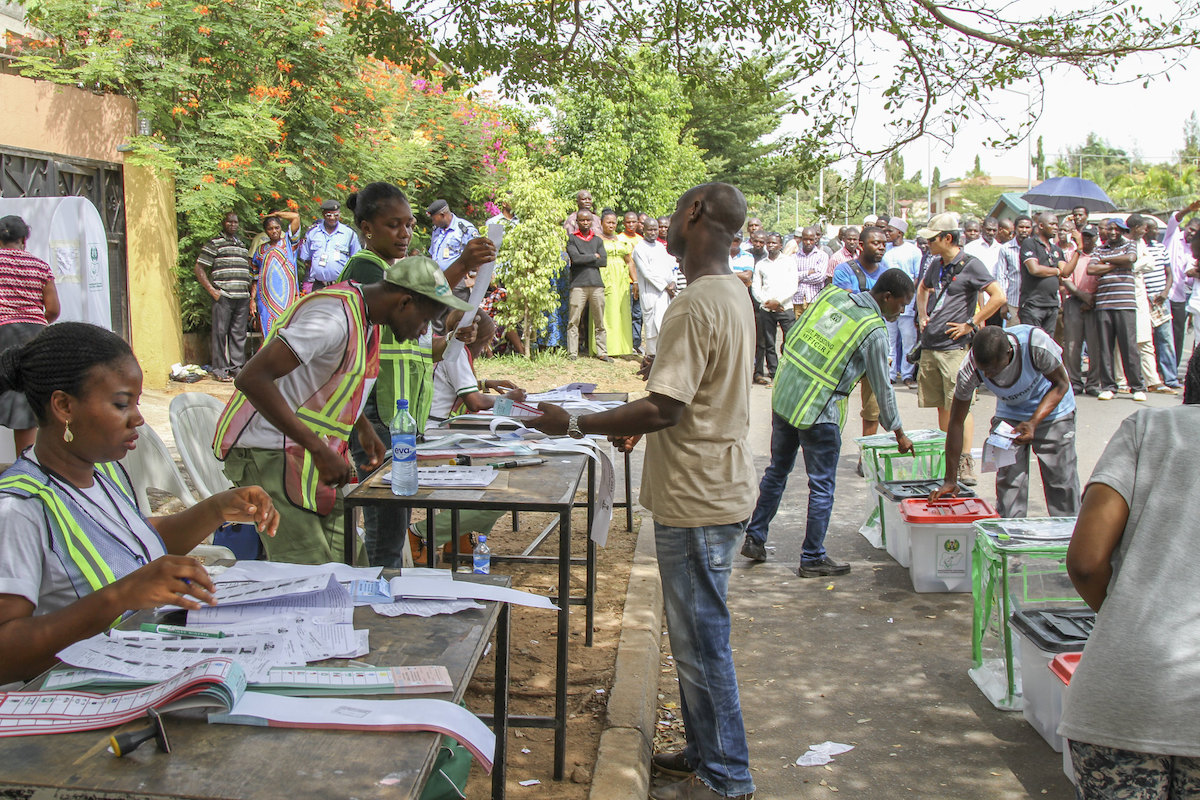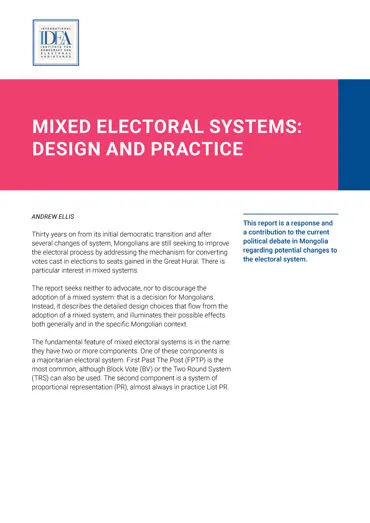The database was created by International IDEA using desk research conducted by in house researchers, global survey of EMBs, and also by contracting regional/local consultants. The community is encouraged to use the database and to help us improve existing entries by suggesting revisions to keep the database up-to-date.
Electoral System Design Database
Export dataSelect the criteria below to start your search
Want to compare multiple countries, regions or entities at the same time? Please use the advanced search tool.
Advanced searchAbout this database
The choice of electoral system is one of the most important institutional decisions in any democracy. Electoral systems define the rules of the political game; they help determine who is elected, how a campaign is fought, the role of political parties, and most importantly, who governs. Furthermore, the choice of an electoral system can help to "engineer" specific outcomes, such as to encourage cooperation and accommodation in a divided society. Historically, however, it has been rare that electoral systems are deliberately chosen or carefully designed for the particular historical and social conditions of a country. In some cases, the choice has reflected the impact of colonialism; in others, the influence of neighbouring systems.
The Electoral System Design Database provides comparative data on electoral systems used in 217 countries and territories across the globe. Compared to other similar datasets, this expansive international coverage makes this database the most comprehensive source of information in the elections field. Interactive tools, including maps and graphs, allow users to easily compare regions and sub-regions, filter necessary data and export raw data for further analyses. Country pages provide in depth country level data in a historical format.
Methodology
The initial data on electoral systems was gathered for the Electoral System Design: The New International IDEA Handbook published in 2005 by International IDEA. A group of researchers conducted in-house research to review the electoral legislation of countries around the world. The national legal documents were compiled from different sources, including the official web portals of governments, regional organizations working in the area of democracy and electoral processes, and research institutes specializing in the area of elections and politics in general. In exceptional cases, when legal documents on elections-related issues were not available for certain countries, the researchers contacted the national electoral management body (EMB) of those countries in order to obtain the necessary data. These data were then analysed and informed decisions were made on the electoral system design of each country as well as other related information provided in the handbook.
The data gathered for Electoral System Design: The New International IDEA Handbook were later transferred to International IDEA’s Electoral System Design Database. Since the transfer of the data, the database has been continuously updated. During 2016-2017, historical data covering the elections conducted in each country since 1991 were also added to the database. Beginning from 2018, the data for every country in the database is updated following the cycle of parliamentary (lower house) elections.
We invite researchers and practitioners working in the area of elections to contribute to the update of Electoral System Design Database. If users note that the database has missing or incorrect data, or if they find missing sources or require more explanation, they can use the online form in the “Submit feedback” section. We will review the submission as soon as possible and update the database if the data suggested is accurate.
Frequently asked questions
Submit feedback
Submit questions or comments about the Data or Tool
How did you find out about this? What do you like about it? What did you expect but did not find in using the Data or Tool?
To see how we handle your personal data, please read our Privacy Policy.







